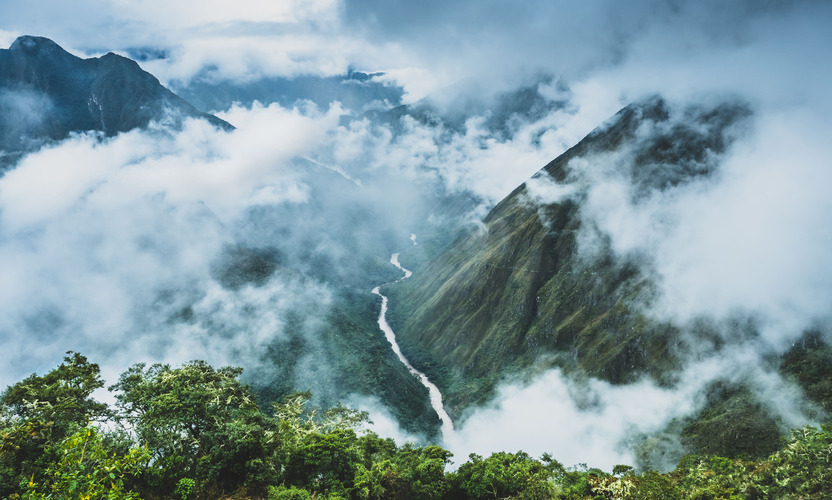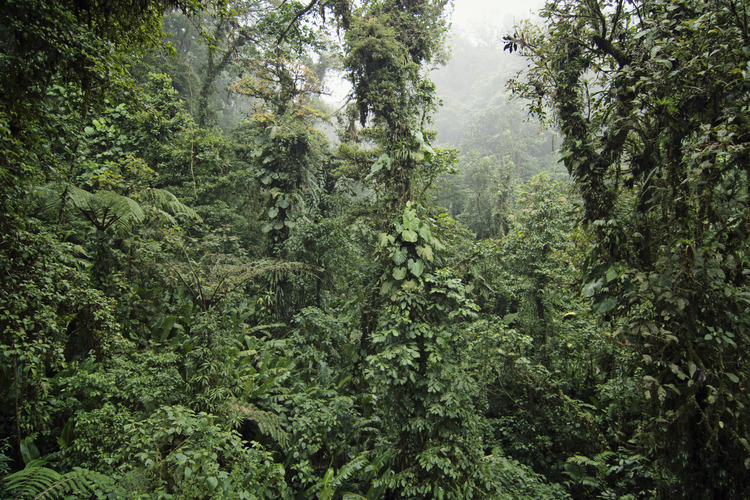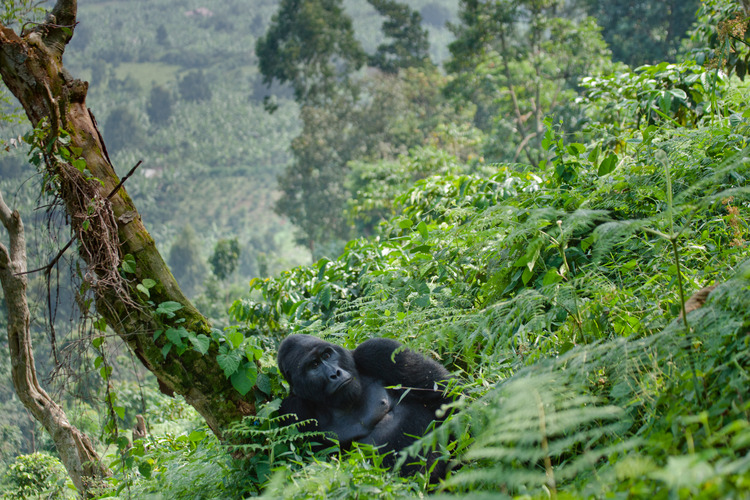
By Susanna Gough
Cloud Forests are a spectacular type of rainforest found at high altitudes, spanning four continents from Costa Rica to Australia
Cloud forests are formed by a perfect storm of climactic and topographical conditions. These elusive montane rainforests are characterised by mountainous environments, tropical or subtropical climates, and their nominal clouds, conjured by moisture-laden air currents. The specificity of their conditions produces high levels of species endemism, with fascinating plants like Nepenthes hurrelliana, a carnivorous pitcher plant exclusive to the Sarawak cloud forest in Malaysia. With their inaccessible locations, unique flora and fauna, and an ever-present veil of mist, it is no wonder that these forests conjure mystical imagery, also known as ‘elfin forests’.
What are Cloud Forests?

They are rainforests’ rarer, mountainous cousins. They are tropical, evergreen, found at altitudes of between 1,000 and 2,500 metres, and experience high rainfall and moisture levels, giving them their characteristic, dreamlike mist. Their humidity produces abundant wildlife, including high numbers of epiphytes – plants that grow on other plants. Mosses, lichens, ferns and orchids abound. Because of their high altitudes, their resident trees are short, gnarled, and woody, making them dense, sometimes impenetrable. With their perpetual clouds and rich wildlife, cloud forests almost appear to be one, breathing organism.
How are they formed?
In cloud forest formation, there is a two-step process known as ‘lateral cloud filtration’. Air currents travel inland from the sea, cooling and collecting as cloud when encountering high mountain slopes. This atmospheric process is what gives cloud forests their enchanting shroud of fog. Next, the clouds filter through the vegetation. Water collects on leaves, saturates moss and precipitates as rain, supporting a vast diversity of animal and plant life. It also condenses into rivers and streams, which are often shallow, rocky, and fast-flowing. In the Q’eqchi’ Maya language, there is a saying that ‘the forest catches the clouds’ (‘naxchap li choq’), which perfectly encapsulates this process.
Where are they located?

They are found in the tropics, either side of the equator, and exclusively in mountainous areas. They are located across the western side of central and South America, southern Brazil, central and South Africa including Madagascar, northern Australia, South India, Vietnam, Cambodia, and across Indonesia.
How do they differ from rainforests?
Mountainous topography, though crucial, is not the only factor which distinguishes cloud forests from rainforests. The former experience cooler temperatures, less sunlight, and acid nutrient-depleted soils. Combined with altitude, these features lead to their prevalence of shorter, denser trees, creating a labyrinthine mass of vegetation. Rainforests, on the other hand, exhibit the well-known layered tree formation of forest floor, under canopy, canopy, and emergent layer of towering, sometimes sixty metre-tall, trees. Read more about recent ground-breaking research on rainforest peatland carbon storage in the Congo here.
Secondly, lateral cloud filtration produces different river conditions. In rainforests, rivers are often large and slow-flowing, with thick silt beds. Conversely, cloud forest rivers are shallow, fast-flowing, and have rocky beds. It may at first appear that rain- and cloud forests need not differ in name. They are in fact, very different entities, further evident in their differentiated and unique wildlife.
Cloud Forest Wildlife

They are home to a diverse array of flora and fauna. Many of these species are endemic, meaning native and specialised to a certain region and habitat. Cloud forests provide the life force for an important reservoir of biodiversity. Community Cloud Forest Conservation (CCFC) emphasise the importance of avian life to cloud forests. The aptly named resplendent quetzal is endemic to the Central American cloud forests and holds the honourable title of the national bird of Guatemala. Historically it was believed to hold supernatural powers by the Maya. With its iridescent plumage, regal train of turquoise feathers, and glaring red breast that puts the robin to shame, its reverence is not unwarranted.

Another eminent example is the mountain gorilla. The Bwindi Impenetrable Forest in southwestern Uganda is a cloud forest home to half of the world’s mountain gorillas. They have thicker fur than other apes, to adapt to the cool temperatures of cloud forests. These characterful animals have suffered devastating habitat destruction and disease, and it was once believed that the species would not live to see the twenty-first century. War in Rwanda in the 1990s and civil unrest in the Democratic Republic of Congo has led to the destruction of mountain gorilla habitat, and made survey work very difficult. Nonetheless, their numbers are on the rise. In the Virunga Mountains, their population has increased from 480 individuals in 2010, to 604 at present day.
Communities

The indigenous Q’eqchi’ Maya people live in the cloud forests of Guatemala, and consider themselves the children of the thirteen sacred summits along the Sierra Yalijux mountain range. In the immediate post-Columbian era, control over the Q’eqchi’ by the Spanish colonisers was limited because of their mountainous homes and dispersed communities. Nevertheless, agricultural encroachment in the nineteenth century led to many Q’eqchi’ people emigrating to Belize. Throughout the twentieth century, they were systematically oppressed by the Guatemalan government, exacerbated by the country’s almost forty-year-long civil war. Rigoberta Menchú, a Mayan activist, won the Nobel Peace Prize in 1992 for her social justice campaigning for indigenous people in Guatemala.
Threats

Cloud forests and the people and wildlife who call them home face disastrous threats. In 1970, 11% of all global forests were classified as cloud forests. Today, it is just 1 per cent. In remaining cloud forests, higher temperatures due to global warming force vegetation to higher, cooler altitudes. Reduced moisture as a result of this warming is starving the forests, and their wildlife, of the humidity they need to survive. Simultaneously, deforestation decimates their lower slopes. The Living Rainforest warns that cloud forests could be ‘squeezed out of existence’ if this process continues.
Various organisations and projects are campaigning and working to protect cloud forests, such as CCFC in Guatemala and the RSPB St Helena Cloud Forest Project. The cloud forest in the St Helena Peaks National Park is entirely unique, with 250 endemic species. Having lost 584 of its 600 hectares of cloud forest cover, this biome has suffered immense destruction. The forest is crucial to the local water supply, with 60 per centof the island’s fresh water obtained by mist capture. The RSPB, along with the St Helena National Trust, are in the process of a long-term restoration project, aiming to restore both the rare habitat and mist capture process simultaneously.
‘Nature-based Solutions’
‘Nature-based solutions’ and ‘ecosystem services’ are hot topics of the day, and their investment has never garnered more interest. Writing for Mongabay, Josh Cannon explores the ecosystem services that cloud forests provide. In the 25 countries where most cloud forests reside, hydropower dams provide electricity. Over half rely on water from cloud forests. Alejandro Litovsky, founder of Earth Security, an environmental consultancy firm, asks whether the existing dams could be taxed to ‘provide a revenue stream for the protection of the water source’, to make protecting the forests, rather than cutting them down for agriculture, a more attractive financial prospect. It remains to be seen how far these profit-motivated initiatives align with the real protection of our precious ecosystems, or whether traditional conservation efforts are more effective. Either way, both culturally and ecologically, cloud forests and the indigenous communities that rely on them are invaluable.



